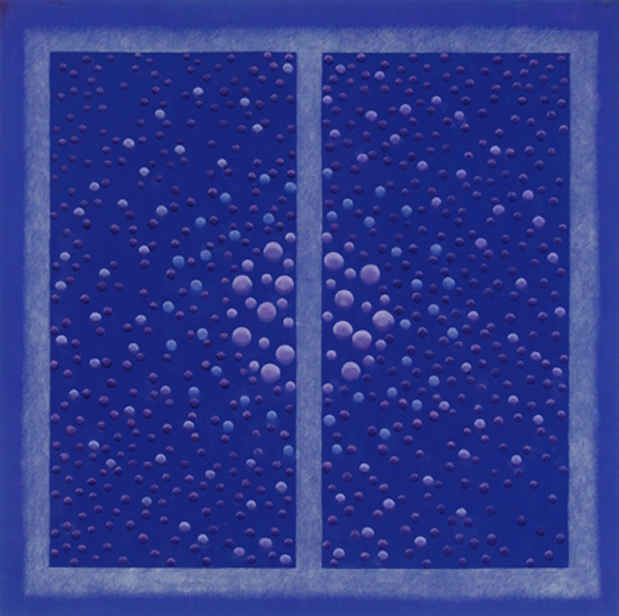"The Art of Miriam Schapiro & Paul Brach" Exhibition
Flomenhaft

This event has ended.
Miriam Schapiro and Paul Brach’s lives and art were inextricably intertwined. They met at the University of Iowa. Mimi studied painting with Stuart Edie and James Lechay, art history with Lester Longman and Mary Holmes, and printmaking with Mauricio Lasansky, whose assistant she became. And she met a fellow student, Paul Brach, who had an enormous influence on her life. Mimi felt she knew a lot about the history of art, but little about anything else. She was unsophisticated and shy. But Paul was very gregarious and pulled her out of her shyness and they discussed all matters of the mind.
Paul and Mimi were married, and in 1951 they moved to New York, living at 51 West 10th Street in a studio building with many fellow artist-neighbors, among them Philip Guston and Joan Mitchell. Paul taught at the New School for Social Research and was a reviewer for Arts. Schapiro taught art to children, sold books at Brentano’s and was also a secretary in a real estate firm.
In the early fifties, New York for artists revolved around the Club and the Cedar Bar. The Club was an outgrowth of a school began by Motherwell, Gottlieb and Rothko. Every Friday was a symposium or debate, and Paul, who was very articulate, soon became identified as one of the new bright young men on the scene. Both painting regularly, Mimi was the first woman to be represented by the prestigious Andre Emmerich Gallery. She had four solo shows with that gallery between 1958-1963, was included in the 1959 Whitney Annual, as well as a 1957 group show at the MoMA known as New Talent. Paul was one of the first artists to exhibit with Leo Castelli in 1957. Later he showed with Cordier and Ekstrom, and then with Andre Emmerich. In 1967 Paul was offered the chair of the new visual arts department at the University of California San Diego, and in 1970 he became the founding dean of the California Institute of the Arts in Valencia, CA. Under his guidance, Cal Arts became one of the best and most recognized art schools in America.
And Mimi became a member of the Cal Arts faculty. It was there that she became a leading light in the feminist art movement, creating the first feminist art program at a university. Mimi invited Judy Chicago to team-teach a class exclusively for women artists, and with a group of twenty-one artists in 1972, Womanhouse, a major feminist statement was created. Mimi is also noted as a leader in the “Pattern and Decoration” movement began in the 80s. She has received many honors and awards including the a Ford Foundation Grant, the John Simon Guggenheim Memorial Foundation Fellowship, the Skowhegan Medal for Collage, and the Rockefeller Foundation Grant for Artist’s Residency at the Bellagio Study and Conference Center in Italy. Her works in museum collections are too numerous to list.
When Paul and Mimi returned to New York in 1975, he became the Chair of the Division of the Arts, at Fordham University in Lincoln Center. After three years he gave up administration and devoted himself to his first love, his art. In 1998, Paul and Mimi moved to a home in East Hampton where they built a studio for each of them, hers on the main floor and his upstairs. Mimi lives in that home to this day. In 2007, Paul died, just two weeks before his last exhibit at the Flomenhaft Gallery. We are proud to share the art of these two wonderful artists and human beings.
Media
Schedule
from November 05, 2009 to December 19, 2009